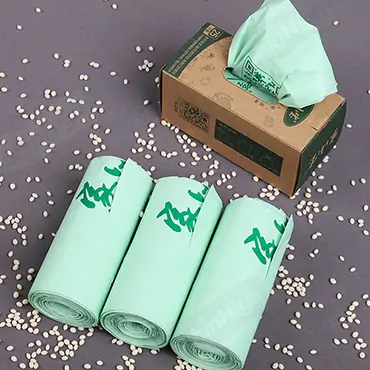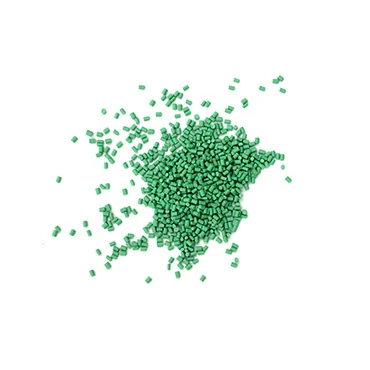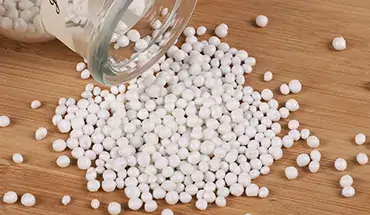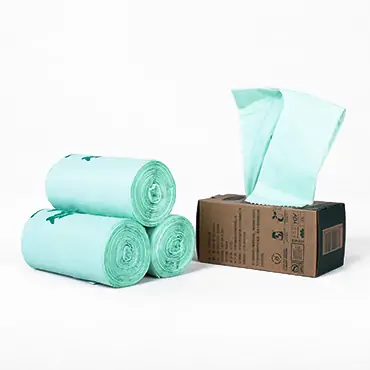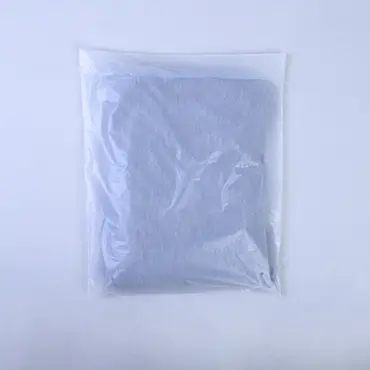White pollution—the overwhelming accumulation of plastic waste that has plagued our planet for decades—has become a global environmental crisis. You’ve likely seen haunting images of beaches, oceans, and landscapes choked with plastic waste. But here’s some good news: thanks to innovation in degradable materials, we’re making significant strides in fighting this issue. The future isn’t as bleak as it may seem, and real progress is being made. With cutting-edge science and an increasing commitment to sustainability, degradable materials are helping turn the tide on white pollution.
What is White Pollution and Why Should You Care?
“White pollution” refers to the unsightly and environmentally damaging accumulation of plastic waste in our environment. It’s called “white” because much of this waste is made up of common, light-colored plastics like polyethylene (PE) and polypropylene (PP), which are used in bags, packaging, and disposable items.
But it’s more than just an eyesore. It poses serious threats:
- Environmental Damage: Plastics take hundreds, even thousands, of years to degrade, polluting our oceans, soil, and waterways.
- Harm to Wildlife: Animals mistake plastic for food, leading to starvation, entanglement, and death.
- Microplastic Contamination: Plastics break down into tiny microplastics, which contaminate our food chain and drinking water, with unknown health consequences.
- Resource Depletion: Manufacturing normal plastics relies on fossil fuels, a finite and environmentally damaging resource.
Degradable Plastics: From Persistent to Decomposable
The biggest problem with conventional plastics is their persistence. They just…hang…around…forever. That’s where degradable plastics come in. They’re engineered to break down naturally, either through the action of microorganisms (biodegradation) or through exposure to sunlight (photodegradation).
Biodegradable Plastics: Nature’s Cleanup Crew
Biodegradable plastics are the rockstars of the sustainable material world. They are designed to be consumed by bacteria, fungi, and other microorganisms, ultimately breaking down into harmless substances like water, carbon dioxide, and biomass.
- Polylactic Acid (PLA): The Corn-Based Champion
PLA, derived from plant starches (like corn), is a prime example. It’s compostable under the right conditions and is already widely used in food packaging, disposable tableware, and even some textiles. Think compostable coffee cups and produce bags! PLA filaments also take the 3D printing world by storm, allowing hobbyists and manufacturers to create biodegradable prototypes and products. - Polyhydroxyalkanoates (PHAs): The Bacteria-Made Marvel
PHAs are a family of polyesters produced by microorganisms. They have excellent biodegradability and can be tailored for various applications. The interesting part is scientists are now working on getting bacteria to produce them from waste material such as agricultural residue.
Biodegradable plastic is a growing industry. European Bioplastics estimates the global biodegradable plastics market reached approximately $4.1 billion in 2020 and is projected to hit $10.3 billion by 2025, boasting a Compound Annual Growth Rate (CAGR) of 20.2%.
Photodegradable Plastics: Sunlight to the Rescue (Sort Of)
Photodegradable plastics contain additives that make them susceptible to UV radiation from sunlight. When exposed to sunlight, these plastics break down into smaller fragments.
Polyethylene (PE) Films with Photosensitizers are commonly used in agricultural films. The photosensitizers accelerate the breakdown process in sunlight. While seemingly convenient, photodegradable plastics have limitations. The degradation rate depends heavily on sunlight exposure, which varies depending on location and weather conditions. Furthermore, there’s concern that they simply break down into microplastics, which are an environmental concern.
Bio-Based Materials: a Natural Solution
Instead of trying to modify existing plastics, what if we could create entirely new materials from renewable resources? That’s the idea behind bio-based materials. Scientists are drawing inspiration from nature to develop sustainable alternatives.
- Cellulose Materials: From Trees to…Everything?
Cellulose is the most abundant organic polymer on Earth, found in wood, cotton, hemp, and other plant materials. It can be processed into a wide range of products, including paper, films, and textiles, that can replace plastic in many applications.
Biodegradable cellulose bags are strong, breathable, and compostable, offering a sustainable alternative to normal plastic clamshells and blister packs. Grand View Research projects the global cellulose market will grow from approximately $21 billion in 2020 to $33 billion by 2028, with a CAGR of 5.8%. - Chitin Materials: Shelling Out Sustainability
Chitin is a polysaccharide found in the exoskeletons of crustaceans (shrimp, crabs, lobsters), insect exoskeletons, and fungal cell walls. It can be processed into films, fibers, and other materials with diverse applications.
Chitin-based cling film extends the shelf life of food by providing a protective barrier against moisture and oxygen. Chitin medical dressings can promote wound healing due to their biocompatible and antimicrobial properties. Markets and Markets estimates the global chitin market size to be around $1.7 billion in 2020, projecting it to reach $2.5 billion by 2025, with a CAGR of 8.0%. The question is that scaling up chitin production sustainably requires efficient sourcing from seafood waste and exploring alternative sources, such as insect farming. - Mushroom Packaging: a sustainable packing material grown from mycelium (mushroom root). It is compostable.
- Seaweed Packaging: Seaweed offers a sustainable solution to plastic packaging. It is edible and degradable.
Recycling: Closing the Loop on Plastic Waste
Even with the rise of degradable and bio-based materials, we can’t ignore the plastic that’s already out there. Improving recycling rates is crucial to alleviating white pollution.
Physical Recycling: Giving Plastics a Second Life
This involves sorting, cleaning, crushing, and melting waste plastics to create new plastic products. For example, recycled PET bottles are transformed into fibers for clothing, carpets, and even new bottles.
However, according to Plastics Europe, the EU plastics recycling rate was approximately 32.5% in 2020, with physical recycling accounting for roughly 23.1%. That means a significant portion of plastic waste still ends up in landfills or incinerators. Also, physical recycling can result in downcycling, and it might not be used for food-grade materials.
Chemical Recycling: Breaking Down the Barriers
Chemical recycling takes a more radical approach, breaking down waste plastics into their original molecular building blocks (monomers) through chemical reactions, such as depolymerization of polyurethane foam. These monomers can then be used to create new, virgin-quality plastics.
Chemical recycling can handle mixed and contaminated plastics that are unsuitable for physical recycling. It also has the potential to create high-value products and reduce our reliance on fossil fuels. Chemical recycling technologies are still in the early stages of development, and scaling up these processes to an industrial level is a complex and costly undertaking.
Challenges and Opportunities: Navigating the Path to a Plastic-Free Future
While the progress in degradable materials is encouraging, there are still hurdles to overcome:
- Cost: New materials often come with a higher price tag than normal plastics, limiting their widespread adoption. For example, PLA can be 2-3 times more expensive than conventional plastics.
- Performance: Some new materials may not be as durable, heat-resistant, or flexible as normal plastics, requiring further research and development to improve their performance.
- Infrastructure: Recycling and composting systems need to be upgraded to handle the influx of new materials and ensure their proper end-of-life management.
- Microplastic Concerns: Some degradable plastics still break down into microplastics.
- Awareness: Many consumers are still unaware of the environmental impact of plastic and the availability of sustainable alternatives.
Policy Support: Setting the Stage for a Green Revolution
Governments worldwide are recognizing the urgency of addressing white pollution and are implementing policies to encourage the development and adoption of sustainable materials.
- EU Circular Economy Action Plan: Aims to reduce plastic waste generation and increase recycling rates through measures such as extended producer responsibility (EPR) schemes and targets for recycled content in products.
- China’s 14th Five-Year Plan: Includes ambitious goals for plastic pollution control, with the aim of significantly reducing white pollution by 2025.
- U.S. State-Level Initiatives: Several states have introduced bans on single-use plastics, incentives for using biodegradable plastics and bio-based materials, and requirements for minimum recycled content in products.
Corporate Action: Businesses Leading the Charge
Many companies are stepping up and embracing sustainable practices to reduce their environmental footprint.
- Coca-Cola: Committed to achieving 100% recyclability of its packaging globally by 2030.
- Nestle: Aiming to make all packaging recyclable or reusable by 2025.
- Unilever: Pledging to halve its use of virgin plastics by 2025.
Besides, manufacturers are responsible for the end-of-life management of their products, designing for recyclability and using sustainable materials.
What Can YOU Do?
The fight against white pollution requires a collective effort. Here’s how you can contribute:
Reduce: Minimize your use of single-use plastics. Choose reusable alternatives whenever possible.
Reuse: Give your plastic items a second life. Find creative ways to repurpose containers, bags, and other plastic products.
Recycle: Properly sort and recycle your plastic waste. Support local recycling programs and advocate for improved infrastructure.
Choose Sustainable Products: Look for products made from degradable plastics, bio-based materials, or recycled content.
Spread Awareness: Talk to your friends, family, and colleagues about the issue of white pollution and the importance of sustainable solutions.
Conclusion: A Green Future
The fight against white pollution isn’t over, but we’re making real progress. From innovative degradable materials to improved recycling technologies and growing public awareness, the pieces are coming together to create a more sustainable future. It’s a future where plastic waste is no longer a burden on our planet, but a resource to be valued and managed responsibly. It requires scientists, policymakers, businesses, and individuals all working together, each contribution playing a vital role in shaping a greener tomorrow. So, let’s embrace the power of degradable materials and other eco-friendly solutions, and let’s build a future where our planet thrives, free from the scourge of white pollution!

